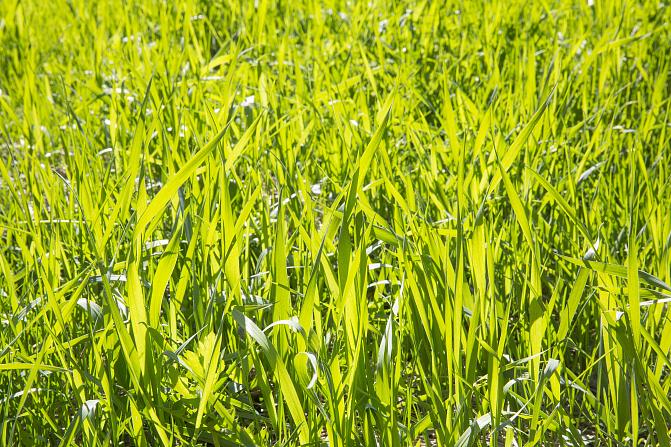We must act now for our better future climate – Researcher’s thoughts on COP27 conference
Researchers Hem Raj Bhattarai and Hanna Kekkonen from Luke participated in the COP27 climate conference that took place from 6 to 18 November in Sharm El-Sheikh, Egypt. Hem shares his thoughts about the meeting in his blog post. You can read Hanna's blog in Finnish here.
What were your expectations for COP27? Were your expectations right?
Expectations were high, not only for my own assigned task but also in general as COP is so relevant to my field of work. I work in Natural Resources Institute Finland (Luke) as a postdoctoral researcher. My current research focuses on understanding the role of grassland towards greenhouse gas emissions mitigation, in particular mitigation of nitrous oxide—a climate warming gas that is ~300 times stronger than carbon-dioxide.
My hopes we exceptionally high about my own task, i.e., panel discussion, as it was first ever panel discussion that I was going to participate. I feel that I managed quite well. Additionally, COP is different and unique than other regular conferences where I have presented specific projects and their outcomes. COP is more about a moment in a year to make solid decisions utilizing scientific facts and findings generated by scientist like me and research group like Luke across the globe.
I was looking forward to seeing climate scientist from different nations and particularly I was curious to see how the climate protest and negotiations can go hand on hand. I found that protest is not always about raising voice against something as it is an act to alarm negotiators and decision-makers to make the right decisions. I got to see many pavilion discussions and acts/protest by climate activists from various fields, such as medical doctors, sociologist, economist, and many more. It was a perception shift for me to see people from different field other than climate-related research field, like myself, being worried and serious about climate change. Personally, I think such alarming chants can act as a catalyst when heard and taken into consideration.
Negotiating process on the other hand was not quite visible to everyone, and I find it inaccessible because of limited participations. Nevertheless, negotiations seem a time consuming and a tiring process as we later found that negotiators were working all day long until midnight. A huge appreciation to them! Afterall, outcome from negotiation was going to be the last nail in the coffin. Additionally, I also find discussion in different pavilions as crucial and as an important platform to share knowledge and to know about initiatives taken by other nations/regions as relevant to their geography and problem of interest. Not necessarily all expectations need to be fulfilled for an achievement, it is also an achievement when you feel and just know how the work is done.
Did COP27 meet or even come close to meeting its objectives?
The COP27 was like previous COPs, and I consider it was successful event in meeting its objective. The COP27 just recently published the first draft about implementation plan recalling agreements from previous COPs and shaping the path towards reducing the climatic impacts by addressing many aspects as they can be seen from this link . It is now on our hand to achieve those and march towards progressive developments.
Why did you participated in COP27? What were the main messages of your presentations?
I got an opportunity to participate in COP27 because of my involvement in project “NC-Grass” under “Catch the Carbon program” initiated by Ministry of agriculture and forestry. I shared the scientific knowledge in Nordic Pavilion about land-use changes in peatlands and associated GHG emissions for sustainable milk and dairy industry in Finland.
Message from our work/project (NC-grass) was very clear. Our work highlights that there must be a harmonious relationship between scientific community and actors on the ground (e.g., farmers). We as a scientist must initiate it though and the first step in the process is to enlighten our farmers about the past and the present situation of greenhouse gas (GHG) emissions from our peatlands. What types of GHG and to what extent our peatlands are emitting? We believe that this could be an opportunity to farmers to understand about the changes that has occurred to our peatlands during past decade or decades because of our activities in the fields.
However, knowing about past and present is not enough. In addition, we should be able to know what will likely happen in the future. A step to investigate that is to use decision making tools, model—for example, that are relevant to our geography and climate.
NC-Grass sees a holistic approach as a solution to drive our milk and dairy industry towards sustainability path. High carbon footprint with a fear of increasing in the future is the one of the biggest challenges that our meat and dairy industry is facing. There are many reasons behind it because food industry involves participation of different actors and their performances, from farmers cultivating a crop in the farm to cattle feeding grass in barn to an industrial step of packaging milk to a consumer consuming the food — for example. Therefore, the solution must be a holistic one.
We must not forget that farmers as such are the key player overall and appreciating their work for implementing evidence-based methods in the field and improving subsidies and incentives for doing so is an additional step to drive sustainability of meat and dairy industry.

How was Finland represented at COP27?
Finland was represented quite well. Together with my colleagues we had an opportunity to share experiences and scientific views about our work in a panel discussion which was watched by many live and online audience. Additionally, our colleague, Hanna, presented her work in a program organized by FAO. In both programs, we discussed and shared our views about sustainable use of peatlands in Finnish context. We could easily guess by audiences’ questions and afterward discussions that our work was visible and recognized. Nevertheless, I also realized that Finland could have much more to present if there were an opportunity, e.g., own Finland’s pavilion. I believe that climate research in Finland is going moving in the right direction and Finland could be an example in many aspects of it.
What new things did COP27 bring to your work, how to move forward?
Participating in COP27 was an obviously a boost for my work and career in general. It is always a motivation to be a part of event that is close to you work, like COP which is shared by numerous across the globe. I consider COP27 was a productive platform for me as it allowed me to feel the importance of our actions for our better future climate. It was far more knowledgeable than reading something same from a textbook or an article. It became more evident before that for our better future climate we must act now, and we must act together. This realization will surely help me from planning my research to its implementation. Additionally, the most admirable thing about COP27 is that it made a history by organizing “Children and Youth Pavilion” for the first time ever. It was a necessary step and after all what we are doing now is for our future generation and there is no better step than involving youth and children in climate conference.
What message would you like to send to decision-makers about COP27?
We all know what we have done to our Mother Nature Earth. We also know about the necessary actions that have potential to reverse/lower the effects that we have caused to our nature. The only message that I would like to bring forwards to decision-makers is that “we must act now”. This mainly refers to the implementation and upscaling of climate actions and supporting research ideas and programs that aims innovation and nature-based climate solutions and guarantee the active participation of all actors in the play.






Kommentit